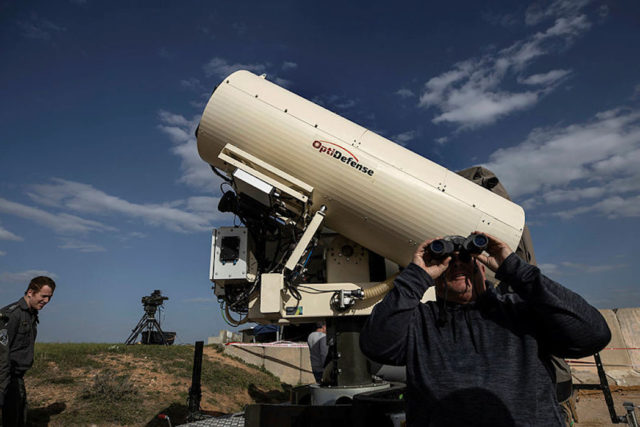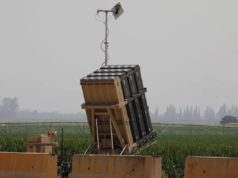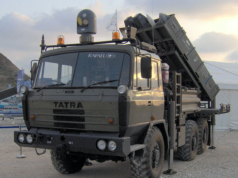Sometimes, your enemy is really big. Departments and ministries of defense spend billions on ships, planes, tanks and very large guns to meet very large threats.
But if the post-9-11 era has taught defense planners anything, it is that some adversaries – knowing they cannot win a war on a conventional battlefield – plan instead on low-tech, small-scale harassment tactics, killing and destroying where they can, and hoping to demoralize people they cannot defeat.
This has been the intention of Hamas, the Palestinian Islamic terrorist organization that rules the Gaza Strip next to Israel. Since 2018, Hamas-launched balloon, condom and kite bombs have decimated more than 10,000 acres of forest, nature preserves and farmland, causing millions of dollars in damage and destroying homes, schools and businesses.
Balloons with explosive devices sometimes have messages written on them in Hebrew, designed to entice Israeli children to pick them up.
This is a particular problem in a specific place, but the implications of flying incendiary devices go far beyond one country.
Rather than consign the civilians of southern Israel to life under fire – both rocket fire and fires on the ground – a very small startup founded by three civilian engineers at Ben Gurion University (BGU) in Israel’s Negev appears poised to help.
OptiDefense Ltd, operating on a shoestring budget and still seeking investors, relied on Israeli Border Police to provide funding for development and test sites. The border patrol has now bought the system and deployed it along the Gaza border.
The Hamas incendiary devices are as low-tech as it gets: helium-filled party balloons or condoms usually strung together, with Molotov cocktails or other explosives strung below. Some carry warheads from rocket-propelled grenades.
Along with balloons, Hamas uses kites. The Times of Israel reported that “the kites are almost all handmade. Three crisscrossing scraps of wood, bound in the middle with a piece of wire, form a hexagonal frame, which is covered in a piece of plastic sheeting. The tails are often made out of cut-up homework assignments.”
Until OptiDefense was formed, the Israelis had no effective defense against these.
The system, called Light Blade, or Lahav-Or in Hebrew, is based on detecting an intrusion and firing a laser to destroy the kite or balloon. Light Blade’s laser is capable of engaging targets with an effective range of 2 kilometers, day or night.
In what may be the system’s strongest calling card, Professor Amiel Ishaaya of BGU’s Department of Electrical and Computer Engineering and two of his colleagues have developed a unique laser that, unlike those presently in use, does not blind people.
This makes it appropriate for operations around sports venues or airports, or even in urban spaces.
Because balloons and kites contain little or no metal and are naturally radar-evading, an optical tracking system is needed to spot them. Light Blade is being paired with a threat detection system called SupervisIR produced by Elbit Systems.
According to Elbit representatives, SupervisIR provides high-resolution wide-area – 90-degree horizontal and 12.5-degree vertical – infrared surveillance, which is equivalent to approximately 150 thermal imagers placed side by side.
Higher on the technology scale, and with the capacity to do more damage, are drones. But drone defense systems are very expensive. Most depend on trying to disrupt communications between the drone and the drone’s operator.
Failing that, some use a laser or other kinetic means to knock out the drone. OptiDefense’s Light Blade is premised on the idea that a drone, balloon or kite may not have any communications with an operator. Therefore, the system is optimized to kill the threat as soon as it is detected.
To that extent, according to OptiDefense, Light Blade should be effective against small drones, particularly light plastic drones from China that are proliferating in the Middle East and worldwide, including in the United States.
In early August, a Major League baseball game in Pittsburgh was interrupted and delayed by a drone that hovered over the stadium. That drone appears to have been unarmed, but drones have threatened airports, especially in Europe, causing delays and potentially having an impact on arriving and departing planes.
And drones have flown around nuclear power plants and defense installations. It may be only a matter of time before a terrorist-orchestrated tragedy occurs.
While it is hard to conceive of using kites, condoms, pages of children’s homework – or even plastic drones sold in the US for hobbyists – as a weapon, OptiDefense is taking on a low-tech but potentially devastating problem that is growing and spreading.






